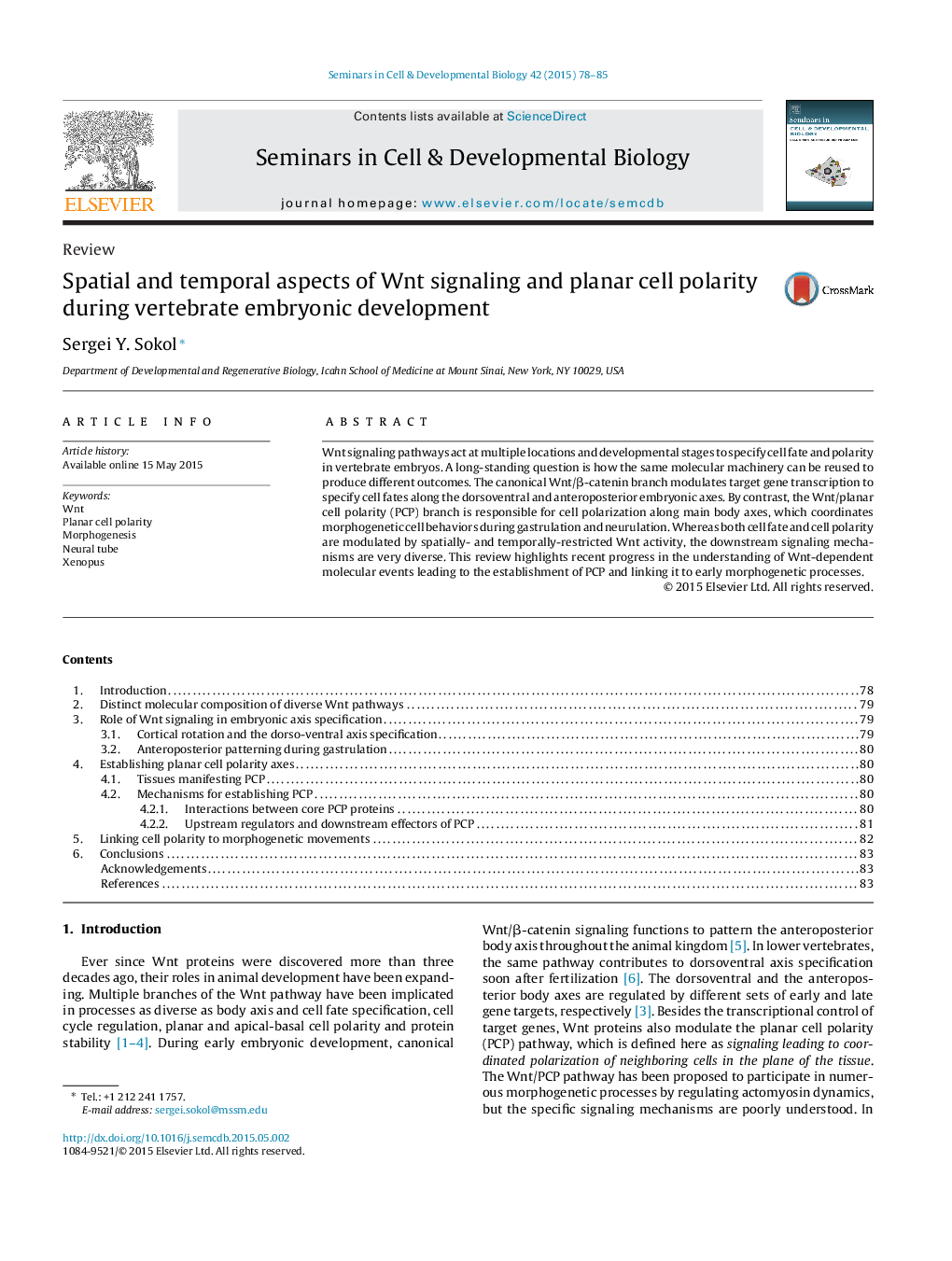| Article ID | Journal | Published Year | Pages | File Type |
|---|---|---|---|---|
| 2202563 | Seminars in Cell & Developmental Biology | 2015 | 8 Pages |
Wnt signaling pathways act at multiple locations and developmental stages to specify cell fate and polarity in vertebrate embryos. A long-standing question is how the same molecular machinery can be reused to produce different outcomes. The canonical Wnt/β-catenin branch modulates target gene transcription to specify cell fates along the dorsoventral and anteroposterior embryonic axes. By contrast, the Wnt/planar cell polarity (PCP) branch is responsible for cell polarization along main body axes, which coordinates morphogenetic cell behaviors during gastrulation and neurulation. Whereas both cell fate and cell polarity are modulated by spatially- and temporally-restricted Wnt activity, the downstream signaling mechanisms are very diverse. This review highlights recent progress in the understanding of Wnt-dependent molecular events leading to the establishment of PCP and linking it to early morphogenetic processes.
